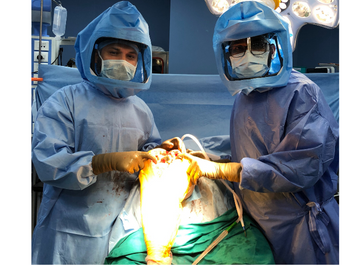- drmrs75@gmail.com
- +91 8080640148 | +91 8692962726

What is Total Knee Replacement?
Total Knee replacement (TKR) surgery also known as knee arthroplasty can help relieve pain and restore function in severely diseased knee joints. The procedure involves cutting away damaged bone and cartilage from your thighbone, shinbone and kneecap and replacing it with an artificial joint made of metal alloys, high-grade plastics and polymers.
In determining whether a TKR is right for you, the doctor assesses your severity of pain, knee's range of motion, stability and strength. Weight bearing X-rays help determine the extent of damage.
The doctor can choose from a variety of knee replacement prostheses and surgical techniques, considering your age, weight, activity level, knee size and shape, and overall health.
What You Can Expect
Before the procedure
Knee replacement surgery requires anesthesia. Your input and preference help the team decide whether to use general anesthesia, which makes you unconscious, or spinal anesthesia, which leaves you awake but unable to feel pain from your waist down.
You'll be given an intravenous antibiotic before, and after the procedure to help prevent post-surgical infection. You might also be given a nerve block around your knee to numb it. The numbness wears off gradually after the procedure.
During the procedure
Your knee will be in a bent position to expose all surfaces of the joint. After making an incision about 6 inches (10 to 15 centimeters) long, your surgeon moves aside your kneecap and cuts away the damaged joint surfaces.
After preparing the joint surfaces, the surgeon attaches the pieces of the artificial joint. Before closing the incision, he or she bends and rotates your knee, testing it to ensure proper function. The surgery lasts about two hours.
After the procedure
You'll be taken to a recovery room for one to two hours. How long you stay after surgery depends on your individual needs. Medications prescribed by your doctor should help control pain.
You'll be encouraged to move your foot and ankle, which increases blood flow to your leg muscles and helps prevent swelling and blood clots. You'll likely receive blood thinners & anti-inflammatory to further protect against swelling, pain and clotting.
You'll be asked to do frequent breathing exercises and gradually increase your activity level. A physical therapist will show you how to exercise your new knee. After you leave the hospital, you'll continue physical therapy at home or at a center.